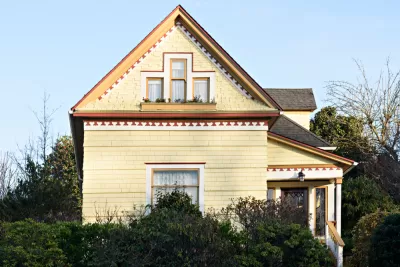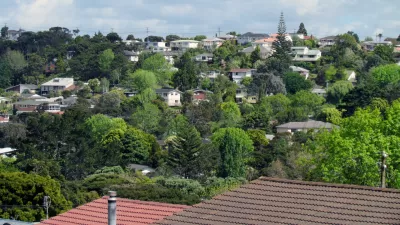In Seattle, most (88 percent) of the city's new housing is being developed in a few small, already dense areas around the city. Most of the city is reserved for single-family housing.

Mike Rosenberg takes a deep dive into zoning in the city of Seattle to examine how it has contributed to the city's skyrocketing residential real estate market. The questioned examined in the article is, "how much of Seattle’s housing is traditional, suburban-style single-family homes, and how that has affected our growth and housing prices."
Rosenberg's analysis finds that with 69 percent o fits residential lots devoted to single-family housing, Seattle's use of residential land is akin to much smaller cities, "[b]ut compared to other peer cities with expensive housing, Seattle generally devotes a lot more of its housing to single-family homes…"
After explaining the residential make-up of the city in other terms, Rosenberg digs into the concept of zoning, which is described as the "whole game" when it comes to housing. According to Rosenberg, because most of the city is limited to single-family zoning, and new buildings have only been added in already dense area, most of the city is not growing in the sense of the size and total of its buildings. That reality has implications for both the homeownership and rental markets, which Rosenberg examines in more detail in the article.
For more on potential changes to the land use scheme currently controlling the market in Seatte, see analysis from March of a proposal to expand the more dense "urban villages" where most of Seattle's growth is located as part of the city's Housing Affordability and Livability Agenda.
FULL STORY: Rapidly growing Seattle constrains new housing through widespread single-family zoning

Alabama: Trump Terminates Settlements for Black Communities Harmed By Raw Sewage
Trump deemed the landmark civil rights agreement “illegal DEI and environmental justice policy.”

Planetizen Federal Action Tracker
A weekly monitor of how Trump’s orders and actions are impacting planners and planning in America.

The 120 Year Old Tiny Home Villages That Sheltered San Francisco’s Earthquake Refugees
More than a century ago, San Francisco mobilized to house thousands of residents displaced by the 1906 earthquake. Could their strategy offer a model for the present?

In Both Crashes and Crime, Public Transportation is Far Safer than Driving
Contrary to popular assumptions, public transportation has far lower crash and crime rates than automobile travel. For safer communities, improve and encourage transit travel.

Report: Zoning Reforms Should Complement Nashville’s Ambitious Transit Plan
Without reform, restrictive zoning codes will limit the impact of the city’s planned transit expansion and could exclude some of the residents who depend on transit the most.

Judge Orders Release of Frozen IRA, IIJA Funding
The decision is a victory for environmental groups who charged that freezing funds for critical infrastructure and disaster response programs caused “real and irreparable harm” to communities.
Urban Design for Planners 1: Software Tools
This six-course series explores essential urban design concepts using open source software and equips planners with the tools they need to participate fully in the urban design process.
Planning for Universal Design
Learn the tools for implementing Universal Design in planning regulations.
Clanton & Associates, Inc.
Jessamine County Fiscal Court
Institute for Housing and Urban Development Studies (IHS)
City of Grandview
Harvard GSD Executive Education
Toledo-Lucas County Plan Commissions
Salt Lake City
NYU Wagner Graduate School of Public Service




























